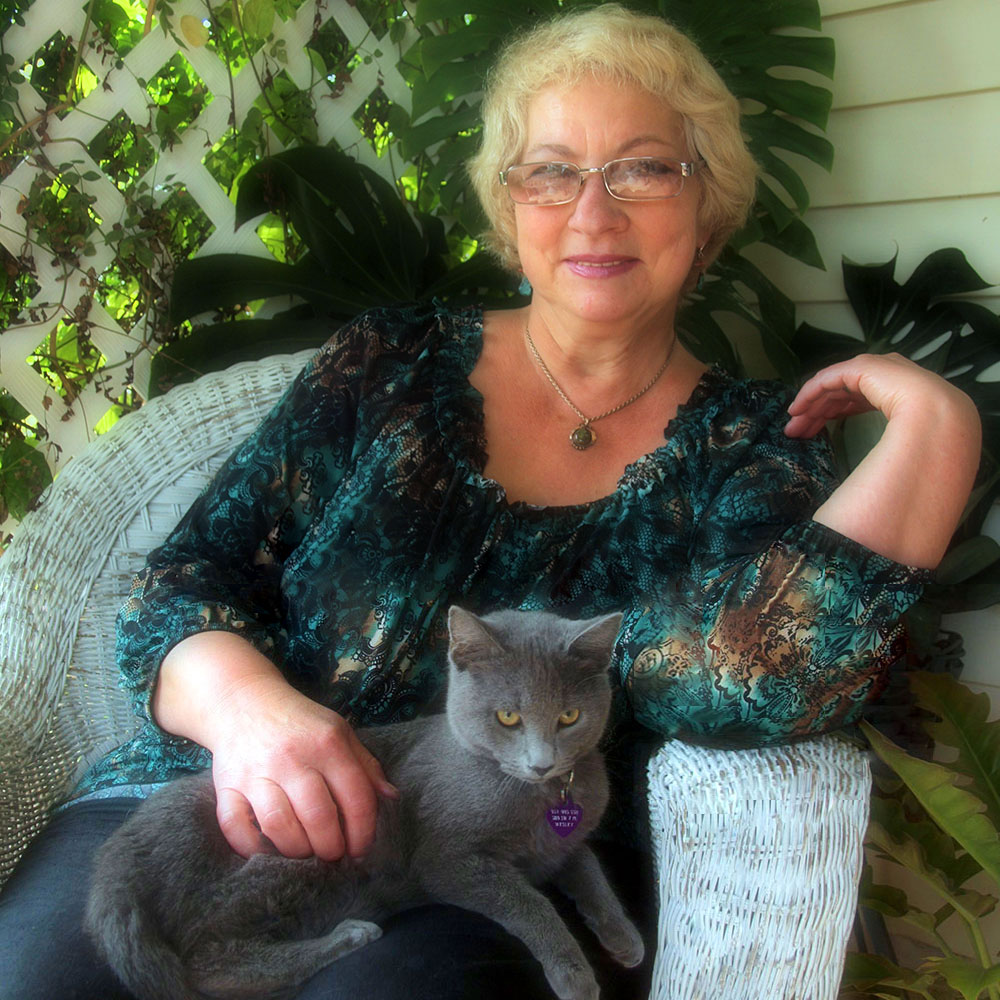Philodendrons: from the Magic Rainforest to your home
by Alex Butova, the Witch of Herbs and Cats
Alexandra Butova is our columnist, journalist, and photographer, living in Riga, Latvia. She has has been with TopTropicals since Day One (2002), writing about magic plants, travel, and of course cats - from the CatNation she belongs to. Alex is in charge of TopTropicals.ru website.
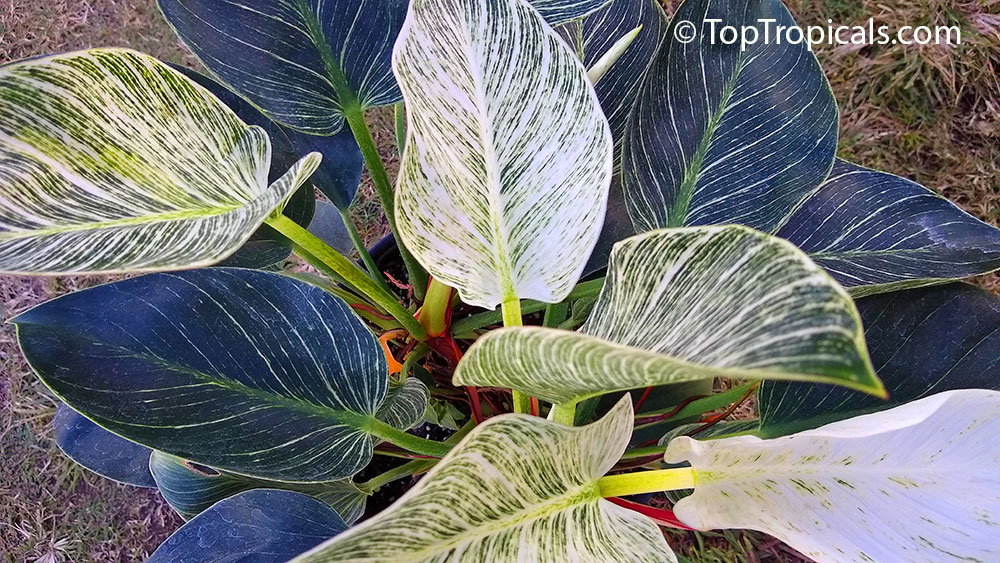
Philodendrons: from the Magic Rainforest to your home
...Tropical rainforests have been called the "jewels of the Earth" and the "world's largest pharmacy", because over one quarter of naturalmedicineshave been discovered there... One of the most excellent representative of this green world is a Philodendron... Taxonomically, the genusPhilodendronis still poorly known, with manyundescribed species...
...Philodendron care is easy because if you watch for the signals, the plant will tell you exactly what it needs. Even inexperienced houseplant owners will have no trouble growing philodendron plants because the plants adapt readily to conditions inside the home. This makes learning how to care for a philodendron incredibly simple...
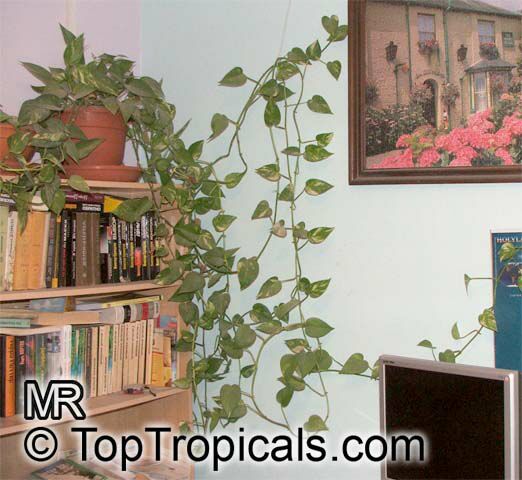
What is a rainforest? It is an area of tall, mostly evergreen trees and a high amount of rainfall. Rainforests areEarth's oldest living ecosystems, with some surviving in their present form for at least 70 million years. Rainforestsare characterized by a closed and continuous treecanopy, moisture-dependent vegetation, the presence ofepiphytesandlianasand the absence of wildfire. Estimates vary from 40% to 75% of allbioticspeciesareindigenousto the rainforests.There may be many millions of species of plants, insects andmicroorganismsstill undiscovered in tropical rainforests. Tropical rainforests have been called the "jewels of the Earth" and the "world's largest pharmacy", because over one quarter of naturalmedicineshave been discovered there...
One of the most excellent representative of this green world is a Philodendron...
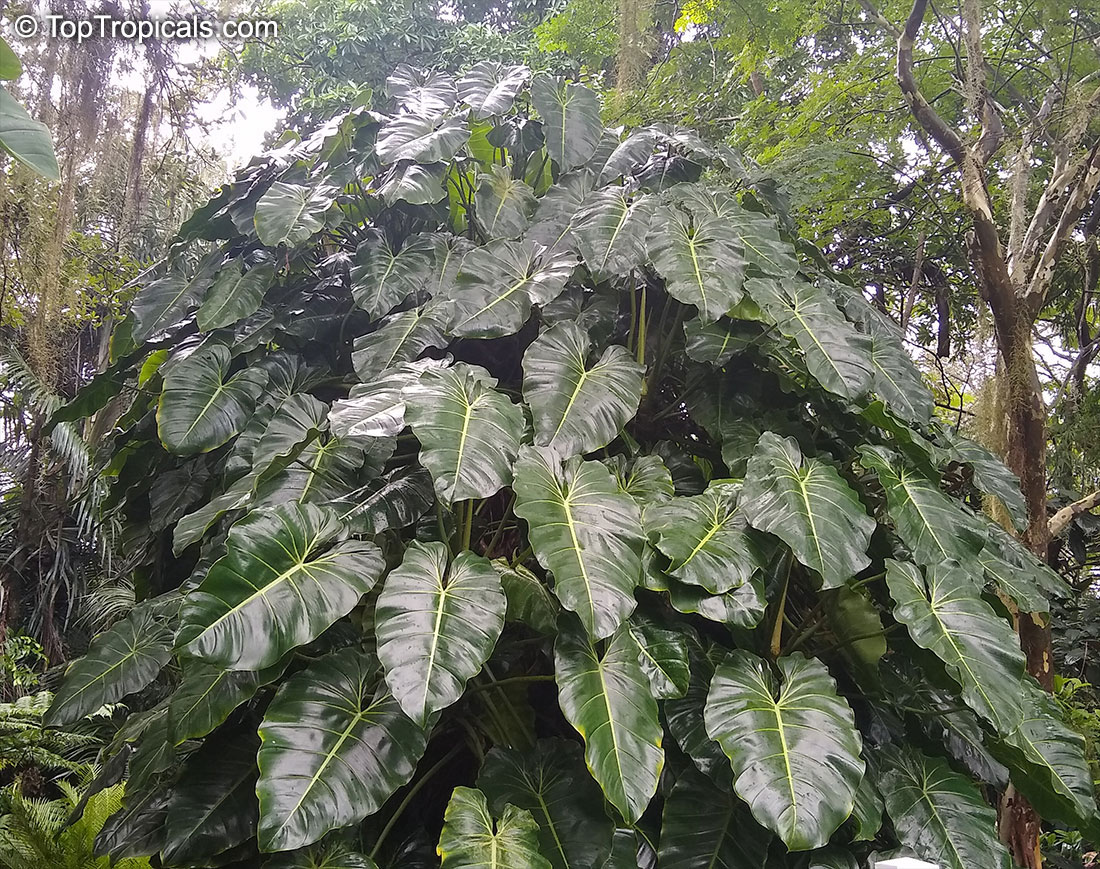
Philodendronis a largegenusofflowering plantsin thefamilyAraceae. As of September2015, theWorld Checklist of Selected Plant Familiesaccepted 489 species; the genus is thesecond-largest memberof the family Araceae, after genusAnthurium. Taxonomically, the genusPhilodendronis still poorly known, with manyundescribed species. Many are grown as ornamental and indoor plants.
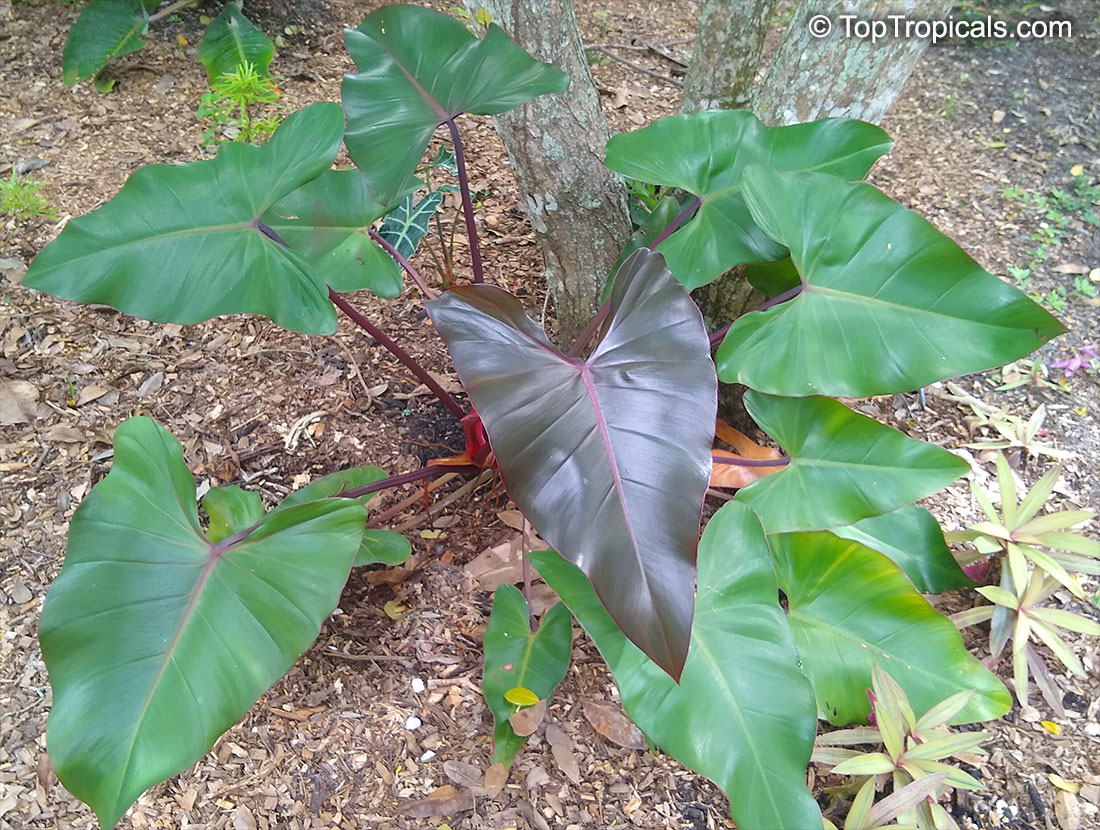
Philodendron species can be found in many diverse habitats in the tropicalAmericasand theWest Indies. Most occur in tropical rainforests, but can also be found in swamps and on river banks, roadsides and rock outcrops. They are also found throughout the diverse range of elevations from sea level to over 6,500 ft above sea level.Species of this genus are often found clambering over other plants, or climbing the trunks oftreeswith the aid ofaerial roots.
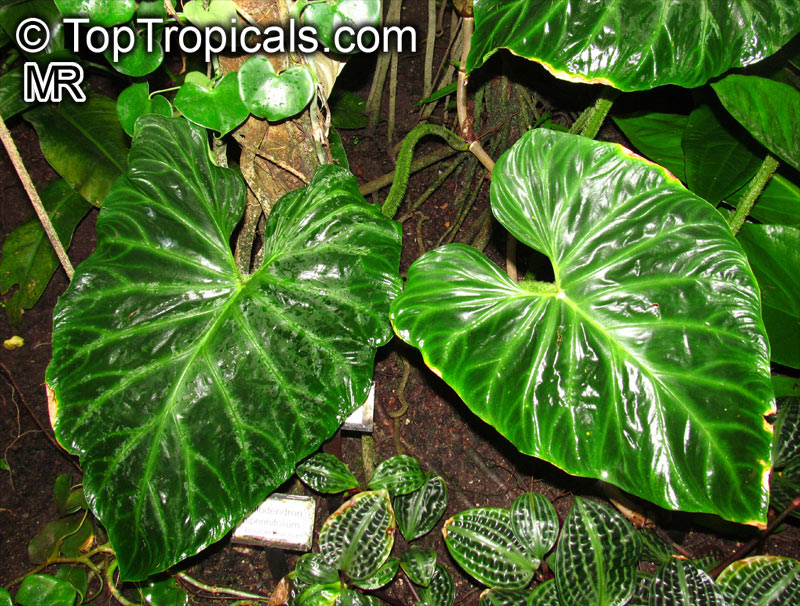
Philodendrons usually distinguish themselves in their environment by their large numbers compared to other plants, making them a highly noticeable component of theecosystemsin which they are found.
Philodendrons can also be found inAustralia, somePacific islands,AfricaandAsia, although they are notindigenousand were introduced or accidentally escaped.
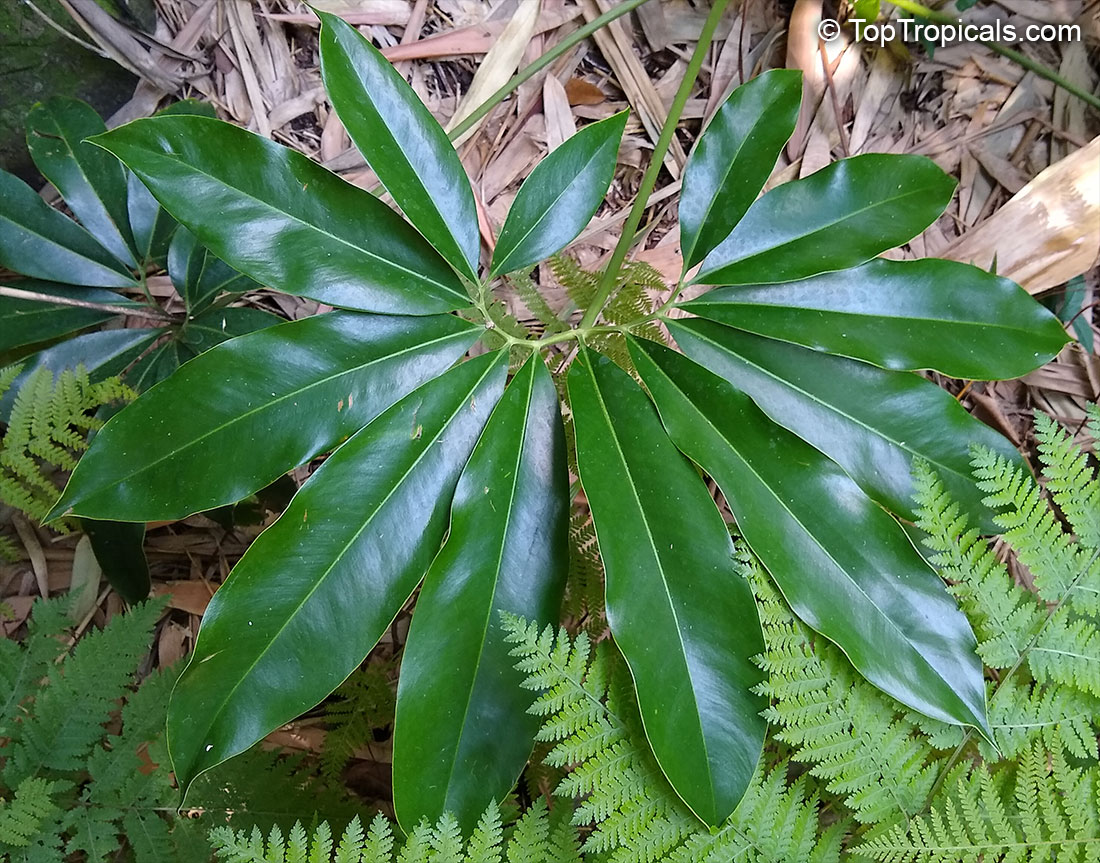
Compared to other genera of the familyAraceae, philodendrons have an extremely diverse array of growth methods. The habits of growth can beepiphytic – growing on other plants,hemiepiphytic – growing both on other plants and from the soil, or rarelyterrestrial – growing from the soil. Others can show a combination of these growth habits depending on the environment.
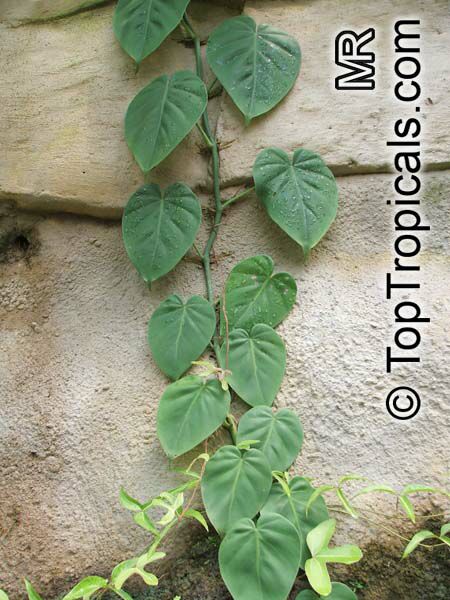
Epiphytes typically grow on a host plant, absorbing moisture and nutrients from air, rain, or surrounding debris. Aside from sometimes engulfing trees and shading them out, epiphytes usually do no harm to their hosts.
Terrestrial plants are the ones you’re probably most familiar with, which grow only from the soil.
Hemiepiphytic philodendrons can be classified into two types: primary and secondary hemiepiphytes.
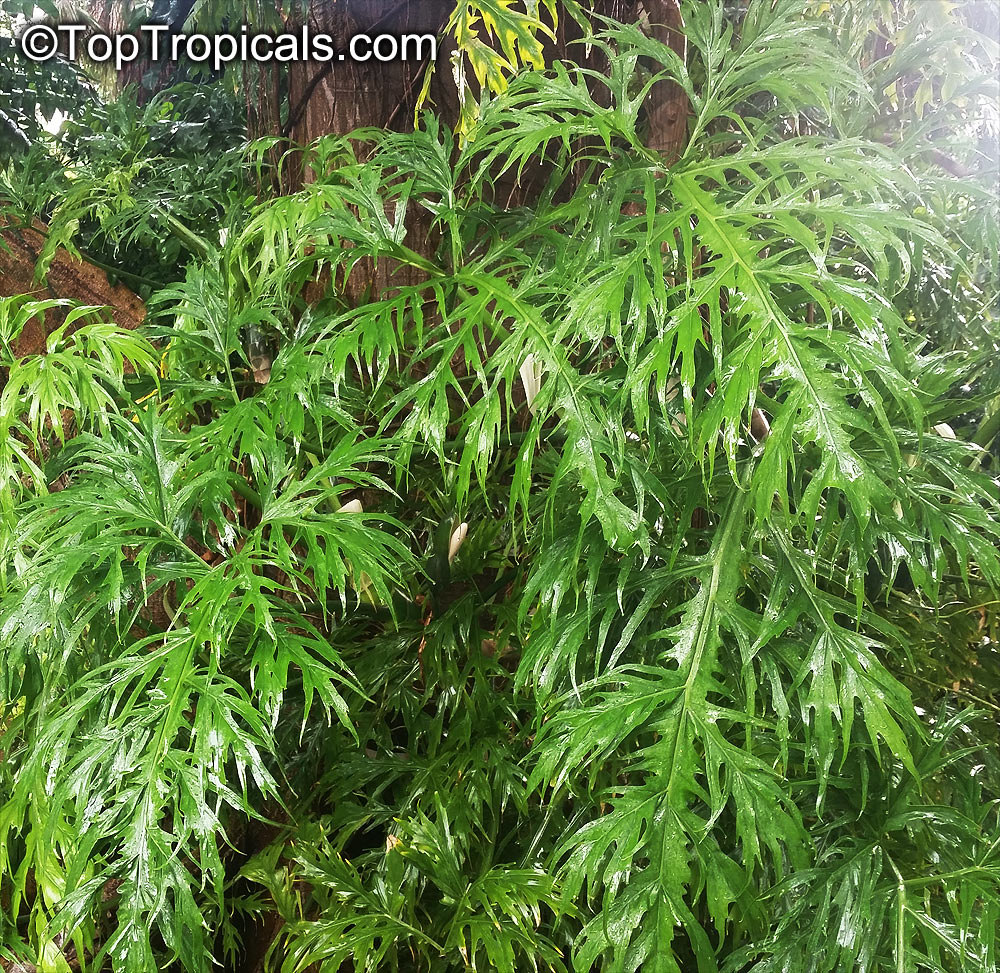
A primary hemiepiphytic philodendron starts life high up in the canopy where the seed initially sprouts. The plant then grows as an epiphyte. Once it has reached a sufficient size and age, it will begin producing aerial roots that grow toward the forest floor. A primary hemiepiphyte disperses its seeds in the tree canopy – or birds and other animals help – and there they germinate and latch onto the tree. As the plant gets older, it sends out roots that grow towards the forest floor, eventually reaching the soil where they can absorb moisture and nutrients.
Secondary hemiepiphytes start life on the ground or on part of a tree trunk very close to the ground, where the seeds sprout. These philodendrons have their roots in the ground early in their lives. They then begin climbing up a tree and eventually may become completely epiphytic, doing away with their subterranean roots. Secondary hemiepiphytes do not always start their lives close to a tree. For these philodendrons, the plant will grow with longinternodesalong the ground until a tree is found.
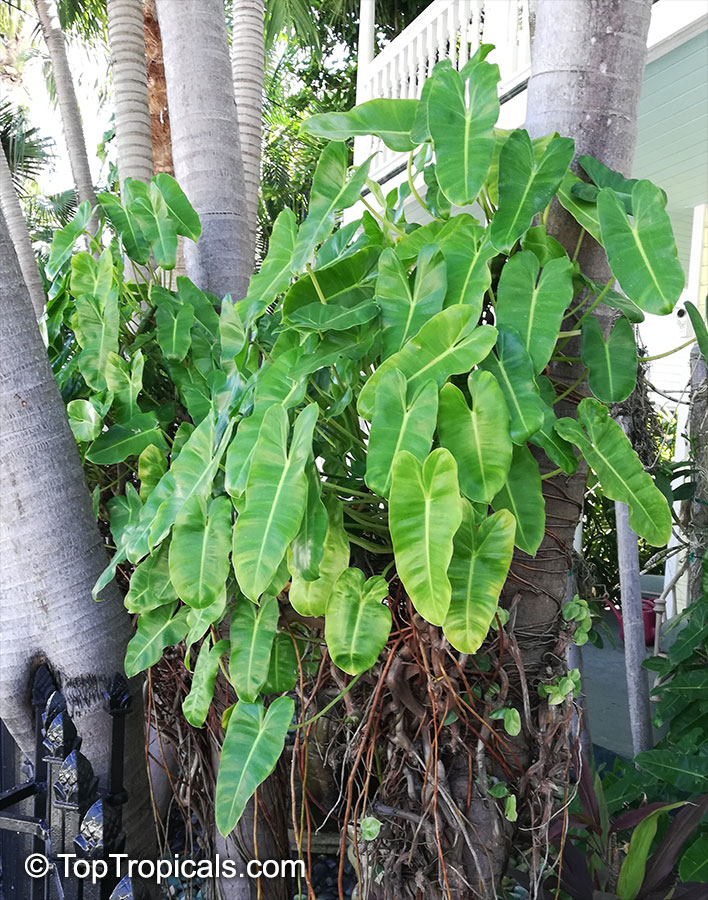
And here’s an interesting fact: unlike most other epiphytes, philodendrons don’t usually die if they fall off their host. Being unusually tough and stubborn, they can simply root into the soil, or immediately recapture the same or grasp another host and start their upward climb again.
Philodendrons have bothaerialand subterranean roots.
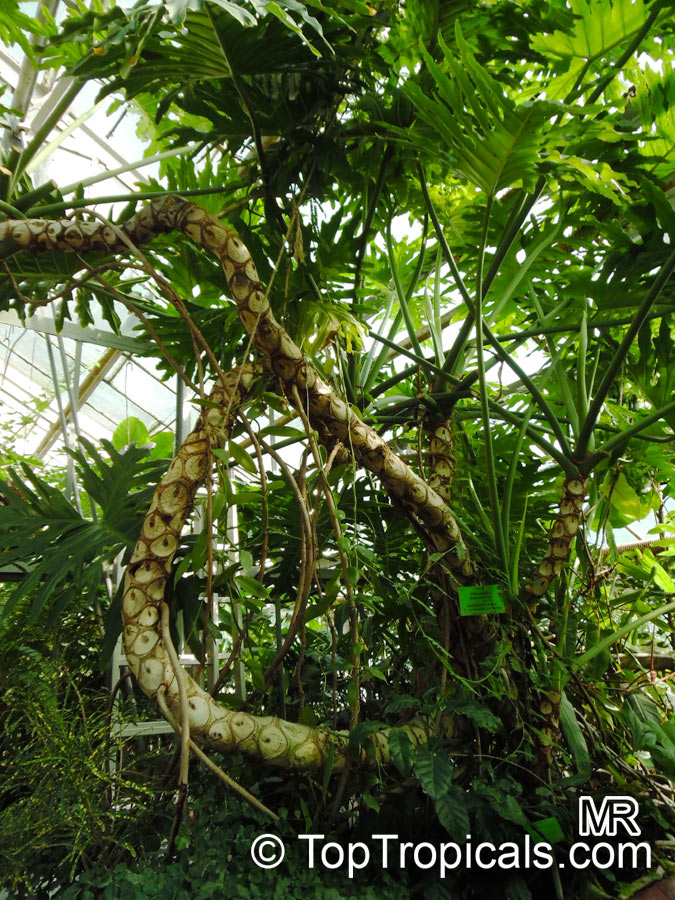
The aerial roots occur in many shapes and sizes and originate from most of the plant'snodesor occasionally from an internode. The size and number of aerial roots per node depends on the presence of a suitable substrate for the roots to attach themselves. Aerial roots serve two primary purposes. They allow the philodendron to attach itself to a tree or other plant, and they allow it to collect water and nutrients.
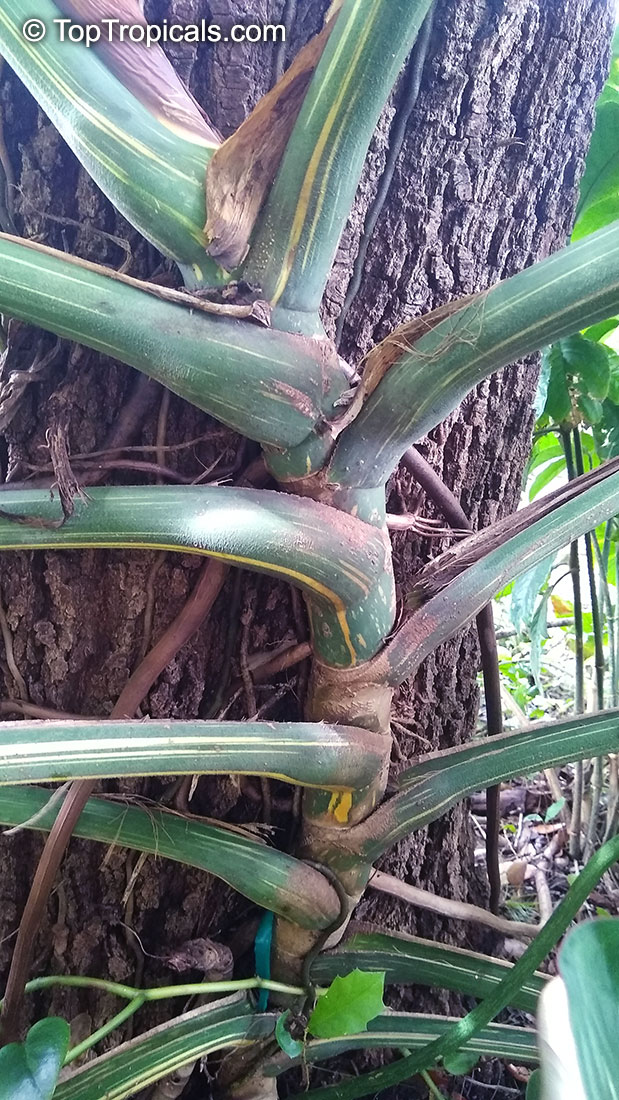
Philodendron's leaves usually emerge with a heart shape as seedlings. As the plant matures, they take on different shapes ranging from large hearts, lily pads, and arrowheads to deeply lobed foliage or leaves filled with holes or slits.
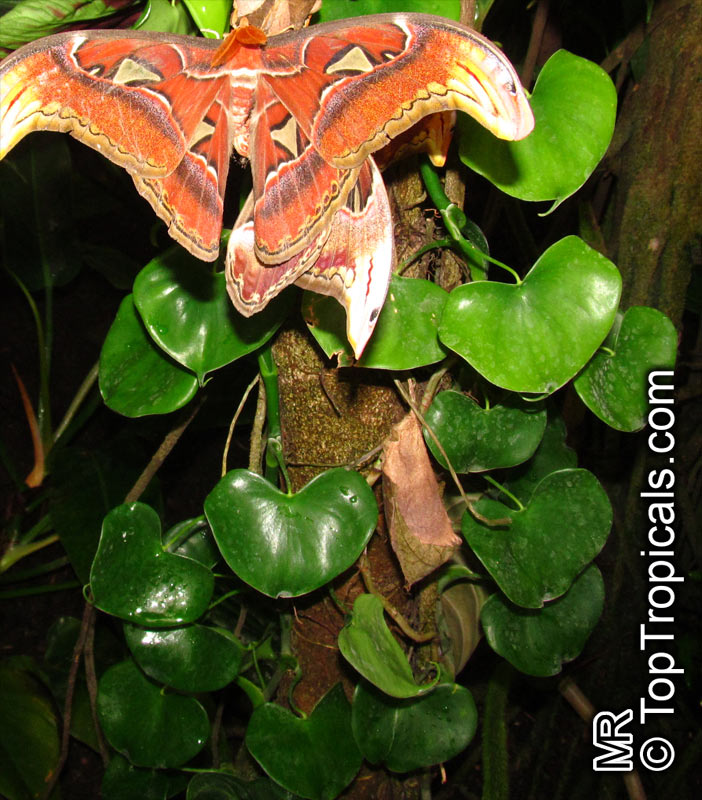
When philodendrons are ready to reproduce, they will produce aninflorescencewhich consists of a leaf-like hood called aspathewithin which is enclosed a tube-like structure called aspadix. Depending on the species, a singleinflorescencecan be produced or a cluster of up to 11inflorescencescan be produced at a single time on shortpeduncles.
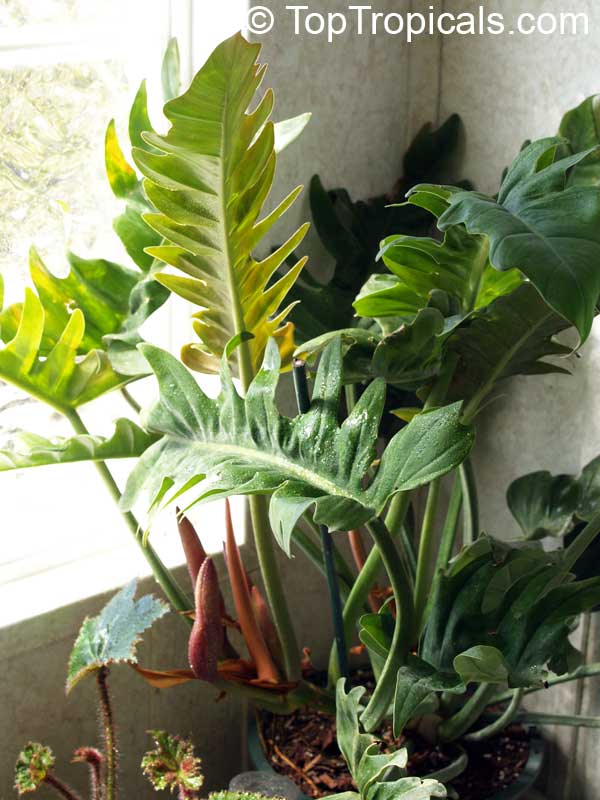
The spathe tends to be waxy and is usually bicolored. The upper portion of the spathe is called the limb or blade, while the lower portion is called the convolute tube or chamber due to its tubular structure at the base.
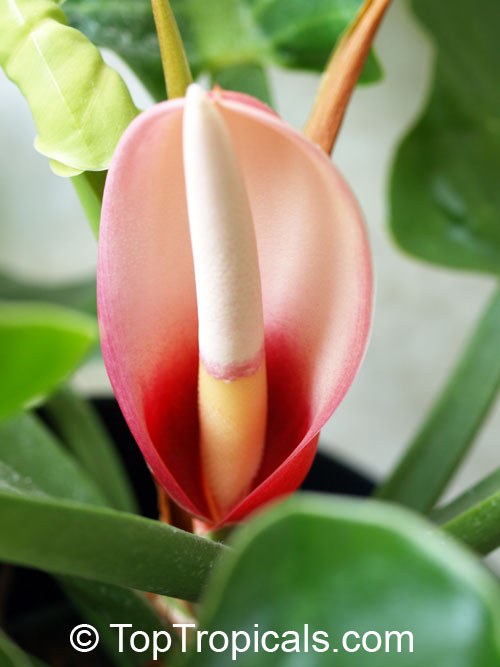
The spadix is shorter than the spathe. On the spadix are found fertile female, fertile male, and sterile male flowers. Sexual reproductionis achieved by means ofbeetles, with many philodendron species requiring the presence of a specific beetle species to achieve pollination.
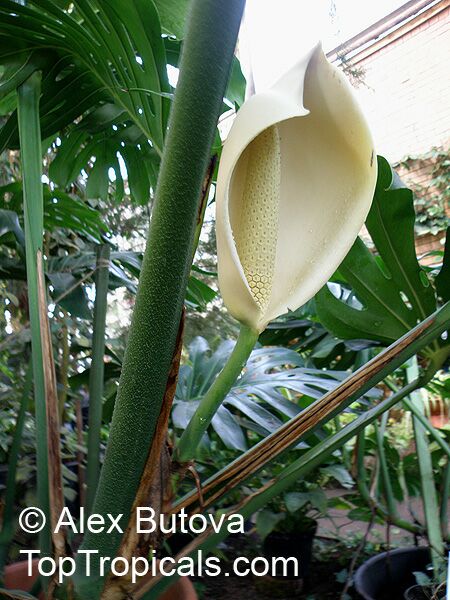
Botanically, philodendron's fruit is aberry. The berries develop later in the season; berry development time varies from species to species from a few weeks to a year, although most philodendrons take a few months. Thespathewill enlarge to hold the maturing berries. Once the fruit are mature, the spathe will begin to open again, but this time it will break off at the base and fall to the forest floor. Additionally, the berries MAY BE edible, although they contain calcium oxalate crystals, and have a taste akin to bananas. Nevertheless, many botanical sources indicate that the berries of any species may be poisonous, precisely because due to the oxalate crystals.
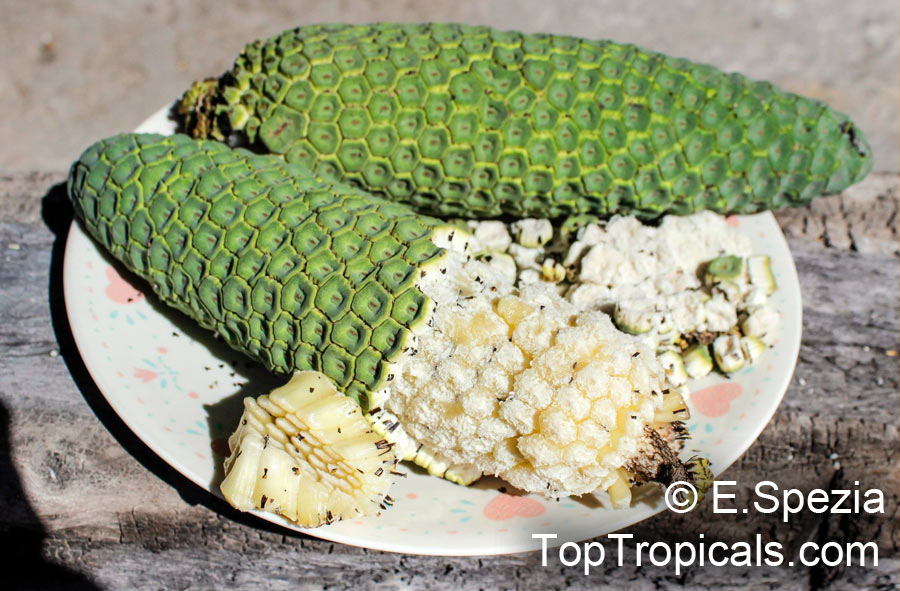
For generations, philodendrons have served as a mainstay in interior gardens.
Philodendron care is easy because if you watch for the signals, the plant will tell you exactly what it needs. Even inexperienced houseplant owners will have no trouble growing philodendron plants because the plants adapt readily to conditions inside the home. This makes learning how to care for a philodendron incredibly simple.
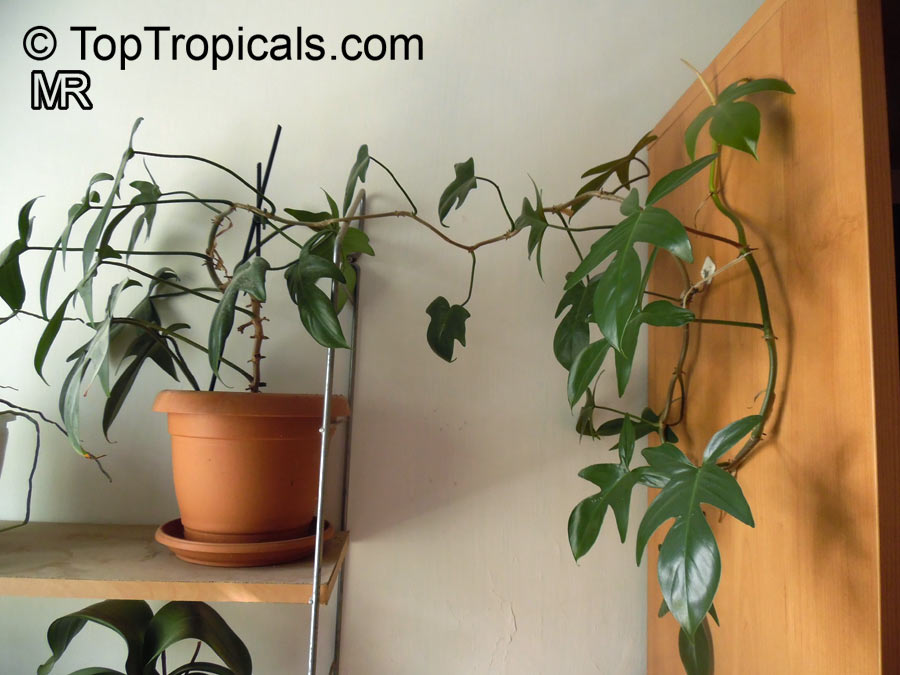
Philodendron houseplants thrive indoors year around without complaint, but they enjoy an occasional stay outdoors in a shady spot when the weather permits (USDA Hardiness Zones9-12). Taking the plant outdoors also gives you a chance to flush the soil with plenty of fresh water and clean the leaves. Unlike most houseplants, philodendrons don’t experience as much stress when moving from indoor to outdoor settings.
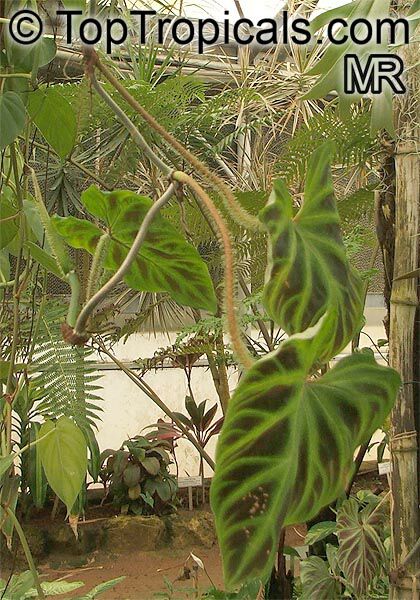
With their ease of care and aesthetic appeal, it’s no wonder these houseplants are so popular, often being used not just in homes but also in commercial offices, lobbies, or shopping malls.

With so many species and varieties of philodendron, there is a plant for pretty much any space, from small tabletop centerpieces to large specimens for the patio or living room.
Our Favorite Philodendrons and Monsteras
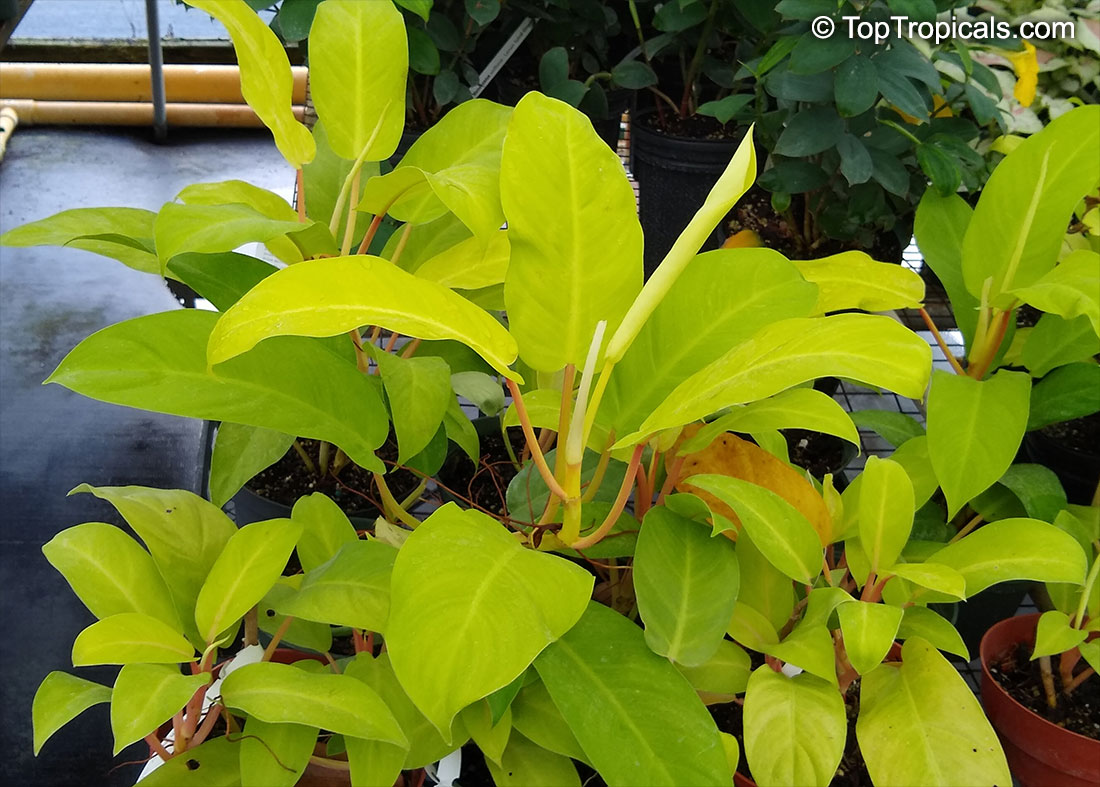
Philodendron Golden Goddess is a spectacular philodendron with chartreuse foliage. Super easy to grow and adapts well to almost any light. This spectacular vine discovered in Indonesia has a lot going for it: It's a member of the trendy philodendron family; it's a climber; and it sports eye-catching golden-yellow foliage. On top of that, Golden Goddess is easy to grow in a bright spot, and like most vines, it becomes more spectacular with age. Over time, the new leaves get bigger and bolder, creating a look you can't help but show off.
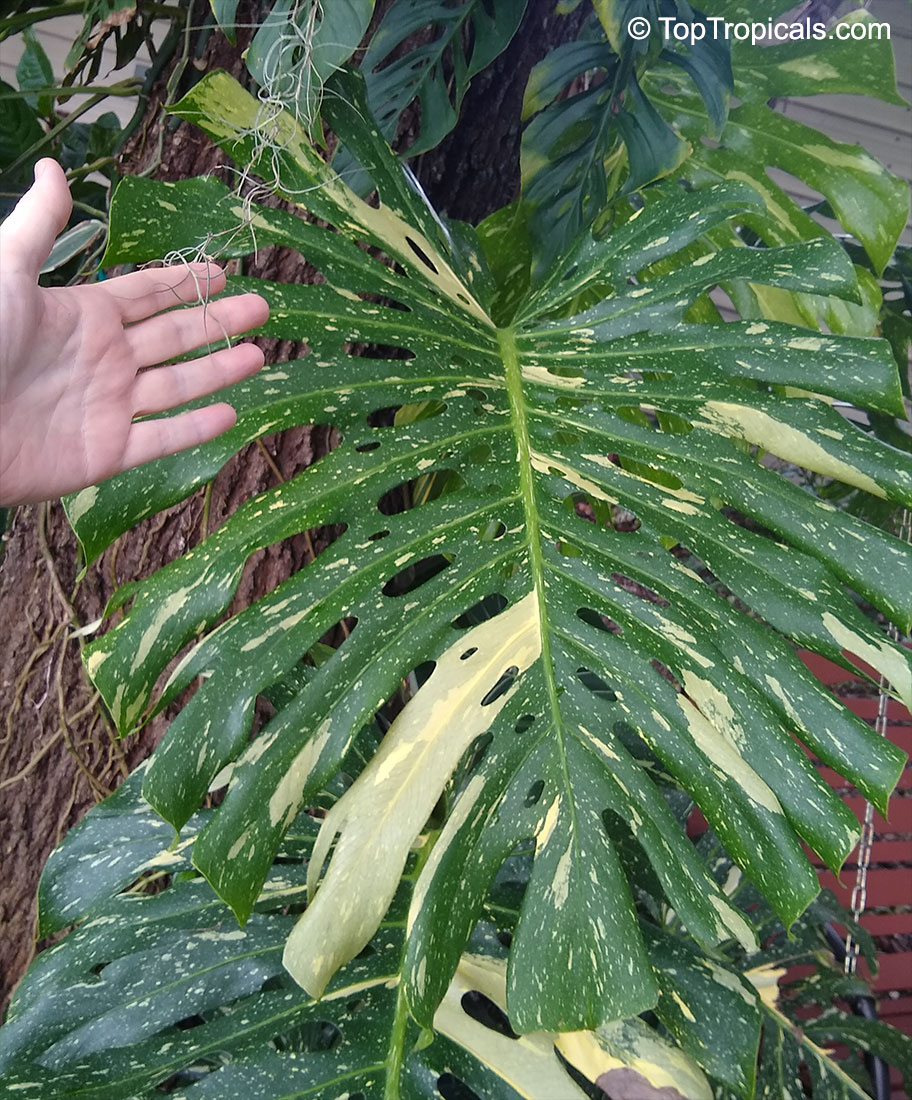
Monstera deliciosa - Swiss cheese plant is a jungle climbing relative of the philodendron from Mexico and Guatemala. It is seen in gardens in tropical and subtropical areas, growing well in partial sun or shade. The plant begins bearing after three years.
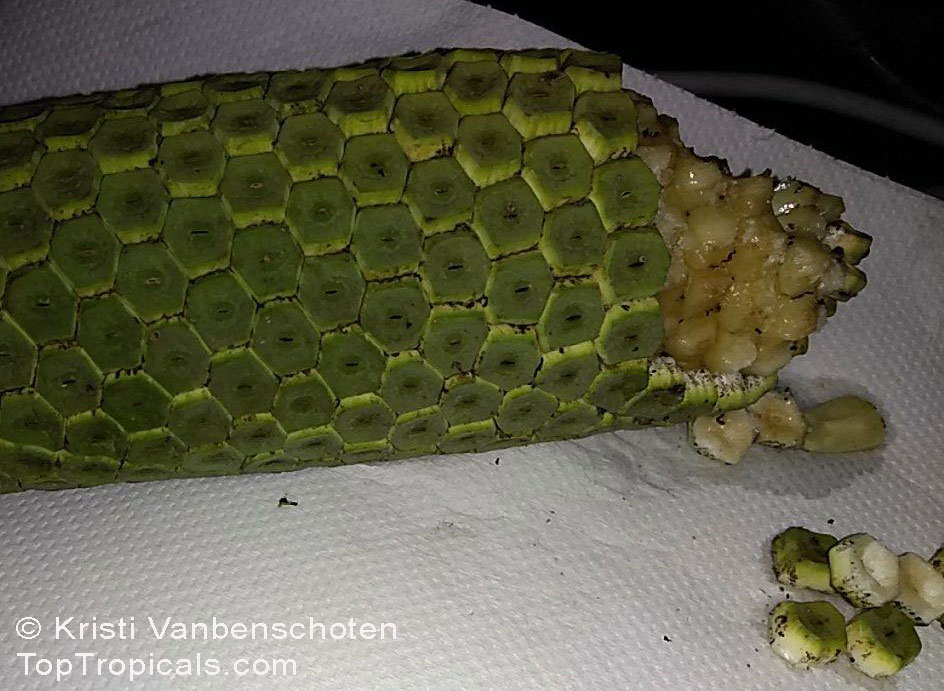
The large deep green, cone-like fruit is actually an unripened flower spike, covered with hexagonal scales that dry out and separate as the fruit ripens from the base upwards, revealing the white pulp. It takes a little longer than a year to mature to an edible stage.
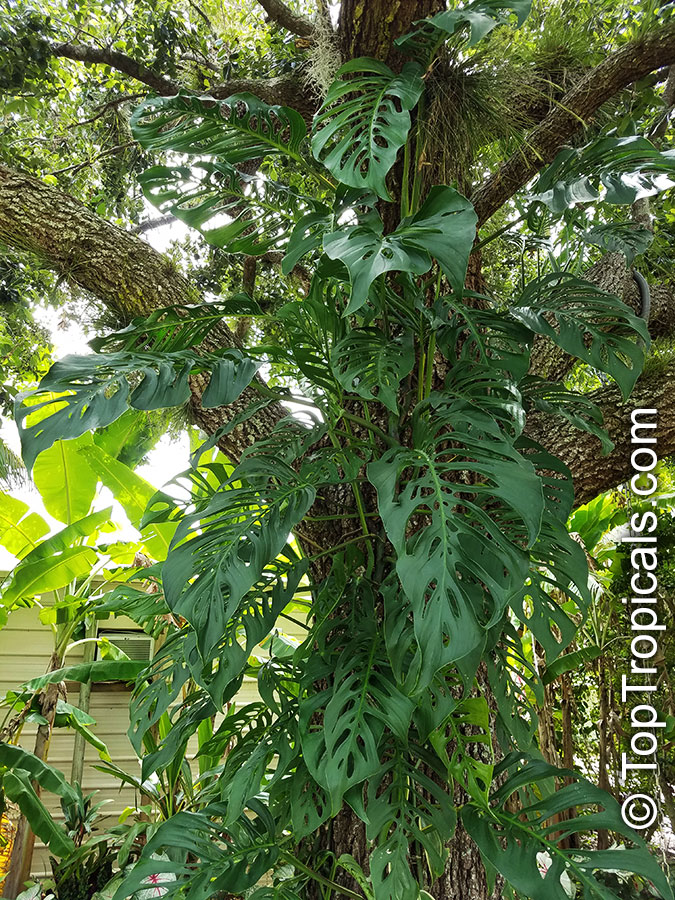
Monstera obliqua x adansonii, Dwarf Cheese Plant is rare collectible, slow-growing hybrid from Columbia. Unusual form of Monstera. Leathery foliage makes it an interesting indoor specimen. Leaves have oval holes. The small nature and easy of production of mature growth make it a wonderful addition to any rare plant collection.
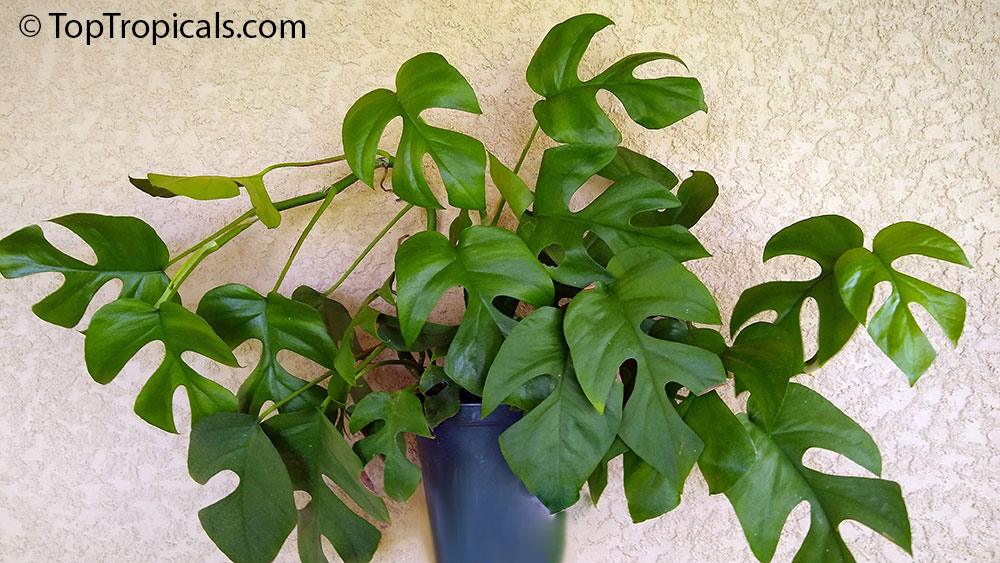
Rhaphidophora tetrasperma - Monstera Ginny, Mini Monstera. Mini Monstera originated from Thailand. Sometimes called Dwarf Monstera or Monstera Ginny due to its resemblance to Monstera deliciosa, the leaves of Rhaphidophora tetrasperma are similarly split and stay quite small. This is a moderate-growing vining plant that remains compact, can be grown in a pot or as a house plant. This plant is easy to care for and loves to climb and thrives in bright indirect light. Pinnate foliage is depending on the individual plant's stage of life.
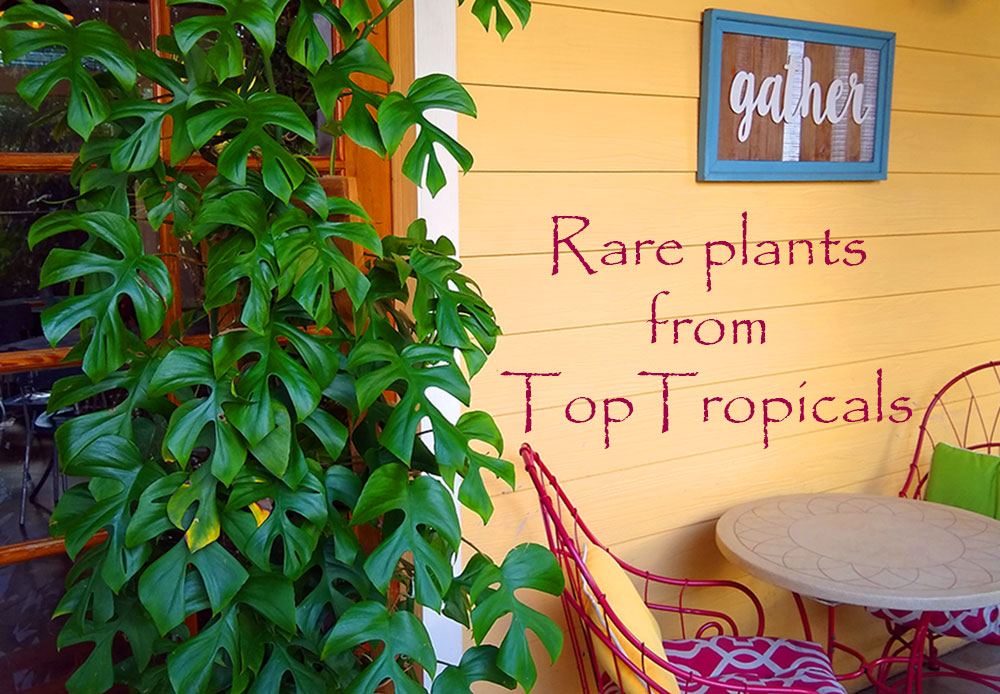
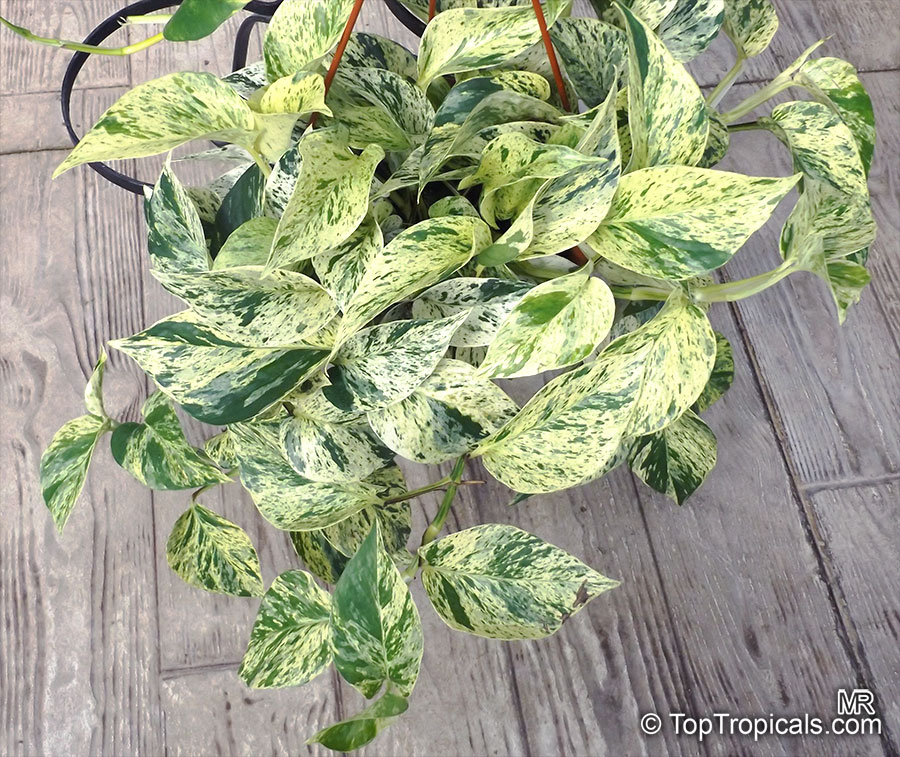
Epipremnum aureum - Marble Queen Pothos. Close relative of Philodendron, this rare spectacular Aroid variety has creamy-marble variegation. The plant is said to bring good luck and prosperity in the house. It is also called devil's vine or devil's ivy because it is almost impossible to kill and it stays green even when kept in the dark. It is sometimes mistakenly labeled as a Philodendron in plant stores. It is commonly known as money plant in many parts of the Indian subcontinent.
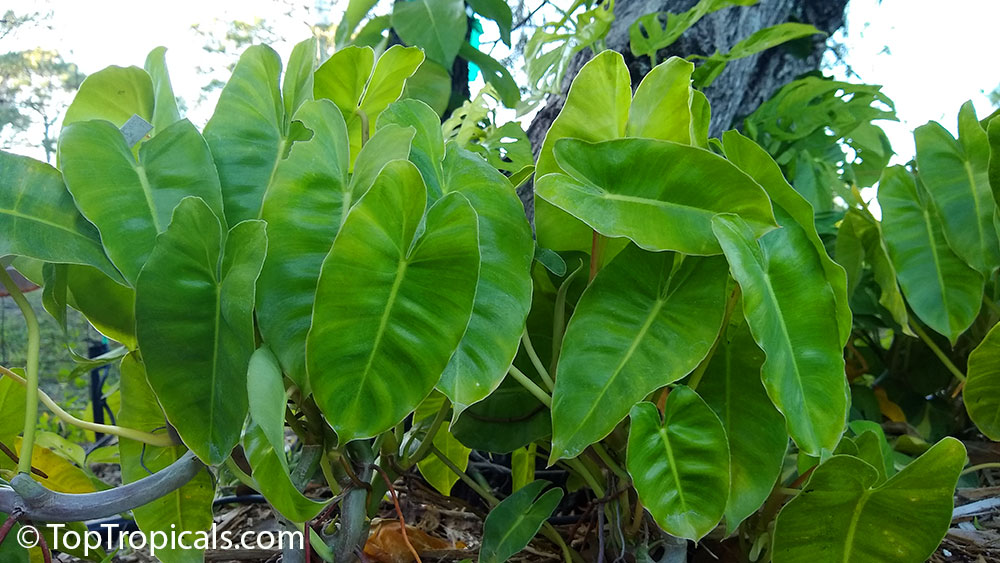
Philodendron Burle Marx is an easy to grow, prehistoric looking, low growing variety well suited for containers and tropical landscape mass plantings. It has shiny, slender, bright green, heart-shaped leaves and reddish stems.The jungle green, elliptical leaves are thick and leather-like and arranged in upright formation. Burle Marx makes a wonderful border plant. Used as a ground cover, it will grow in a clump about 2ft tall. If planted against a tree, it will climb vertically up the trunk. Can be grown indoors or out, and will be a lush and resilient addition to your garden. Native to the tropical jungles of Brazil, this philodendron is named for the eminent Brazilian landscape architect Roberto Burle Marx who championed the use of native plants in modern landscape design.
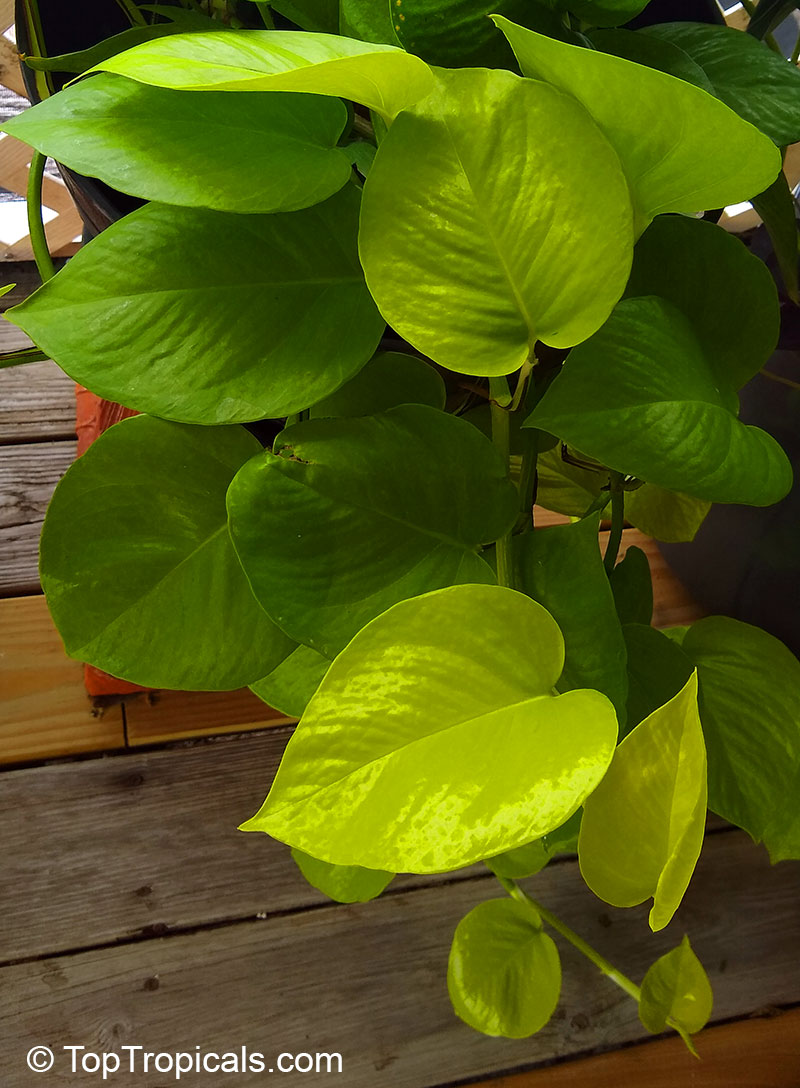
Epipremnum (Philodendron) Golden Heart, Lemon Lime (Neon Pothos) - Often goes under name Philodendron Cordatum Lime Gold (Neon) is a rarer form of the heart leaf Pothos with lime green leaves. A vibrant yellow statement piece, with large stunning heart leaf, it produces long vines and works well in a hanging basket or trailing out of a pot; it can be also grown on a stake or trellis.
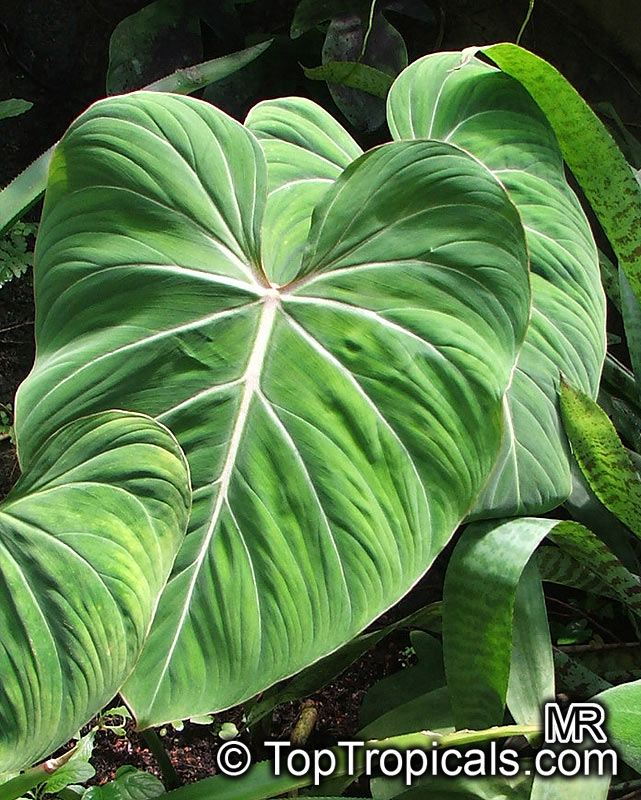
Philodendron gloriosum - Glorious Jungle Philodendron is an exquisite collectors plant originated from Columbia, yet so easy to grow. Unlike many Philodendrons, this species creeps along the ground rather than climbing up a support. Magnificent, heart-shaped deep green leaves have bright white veins that stand out like a beacon. It is ideally suited as a specimen house or patio plant.
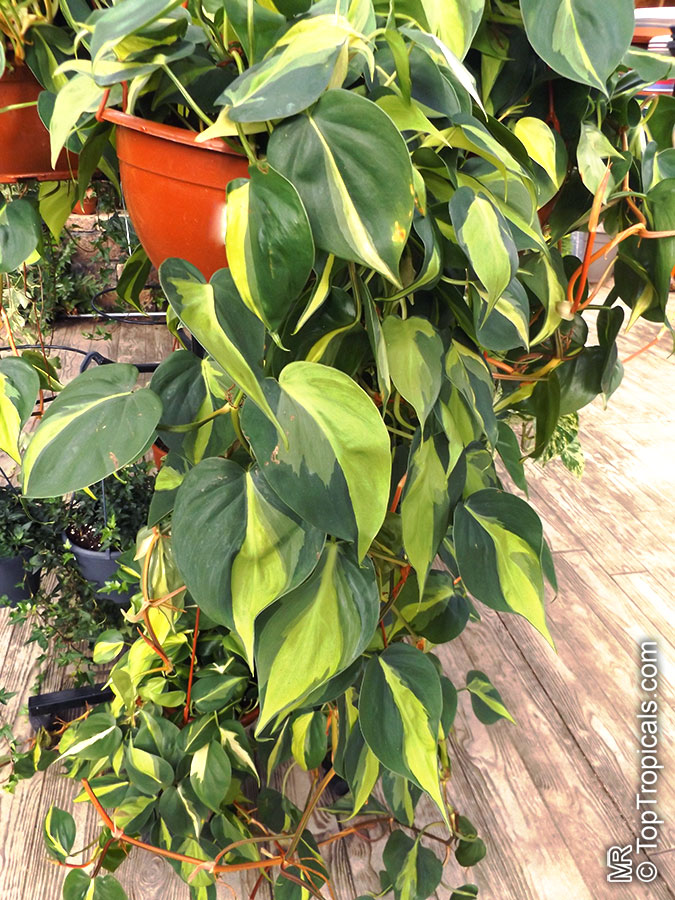
Philodendron scandens Mediopictum Brazil. Spectacular rare veriegated philodendron with heart-shaped leaves that are dark green with yellow variegation in the center of the leaf. Stems have apinkish orange hue.
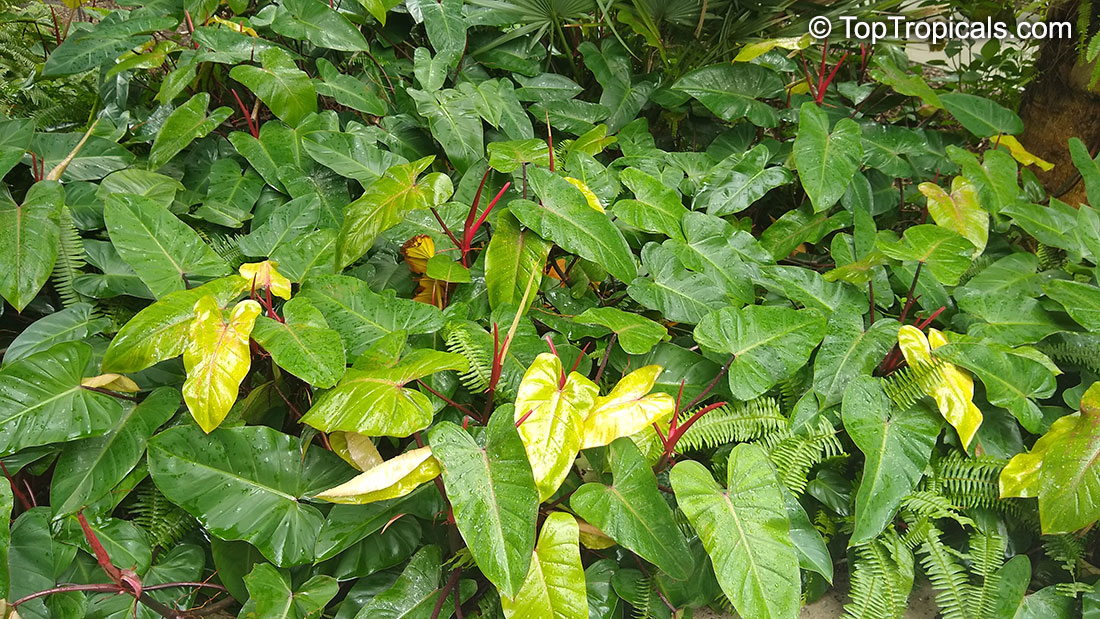
Philodendron Anderson Red is a large leaf variety with bright red stems. The leaves on this extremely showy variety begin yellow with a pinkish underside quickly maturing to jade green with reddish under veins. This is a perfect candidate for larger indoor totems or tree wraps. Collectible variety. It is very easy to grow.
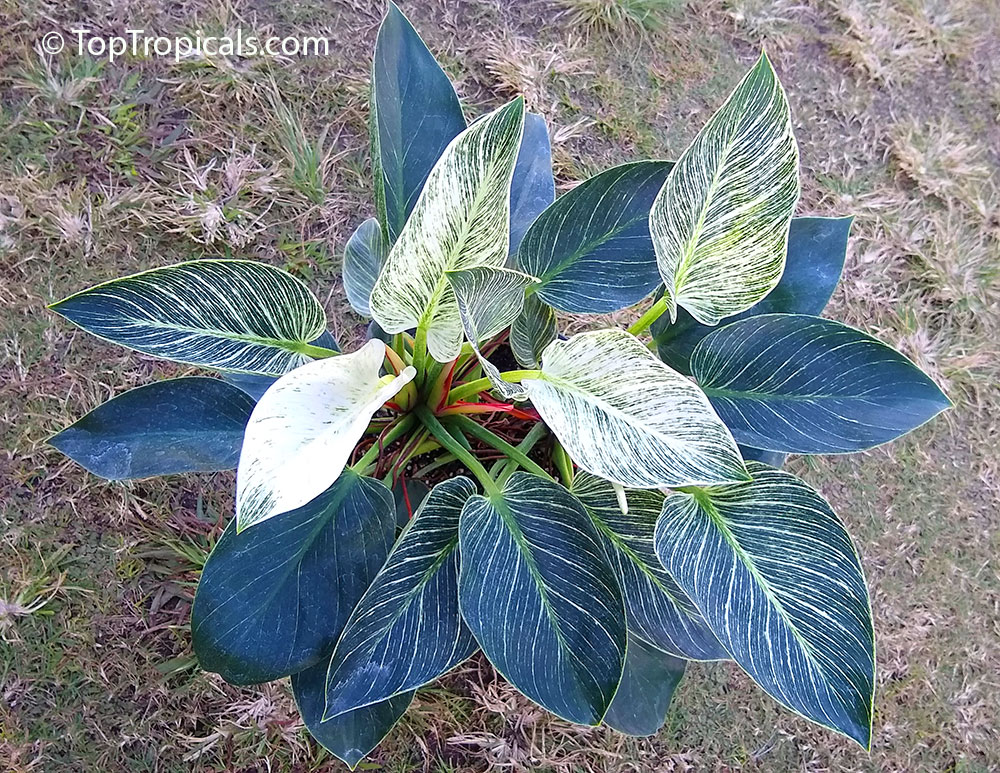
Philodendron birkin - Striped Delight is a delightful philodendron with its dark green-blue-ish leaves that are highlighted by white stripes. As the leaves mature the pinstripes get even more intense making the leaves look like they are gleaming. This rare beauty makes an amazing houseplant and a colorful centerpiece of Aroid plant collection. It originally started life as a mutation on a Philodendron 'Rojo Congo', which was then separated and cultivated.
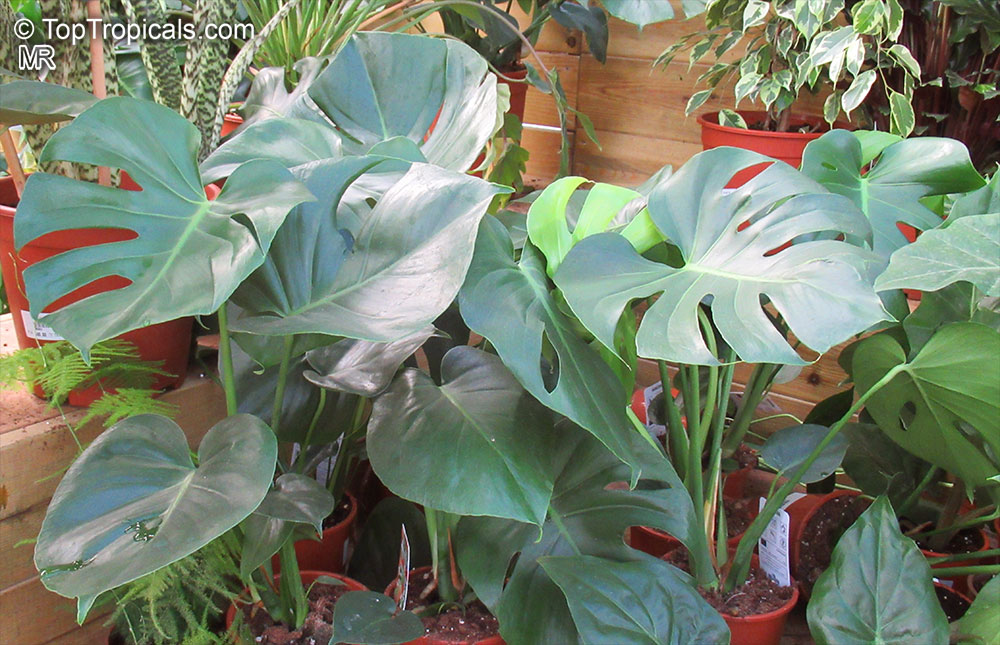
Philodendrons will often survive even in sub-optimal conditions. However, if they are cared for well, you’ll be rewarded with continual robust new growth.
As tropical plants, philodendrons prefer temperatures between 65 and 85F. They do not like temperatures below 50F, though they may survive short periods with temperatures as low as upper-30's. They prefer high, 60-70% humidity.
Keep your plant away from doors or open windows when the outdoor conditions are not within the above parameters to prevent drafts and sudden changes in temperature.
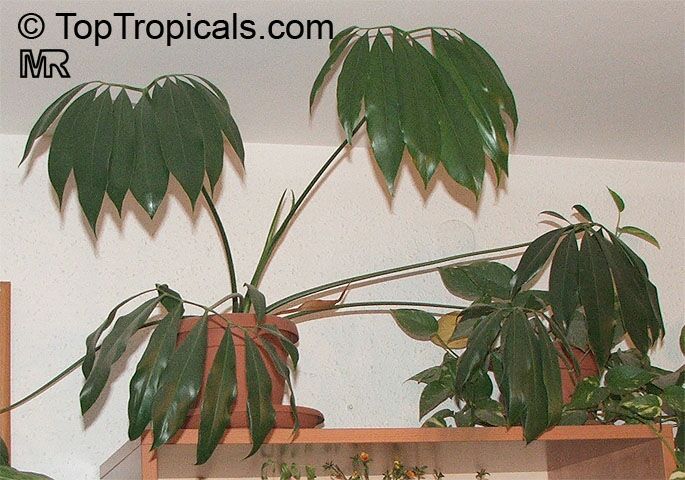
Only water as needed, when the top two inches of soil become dry. Provide bright, indirect sun.
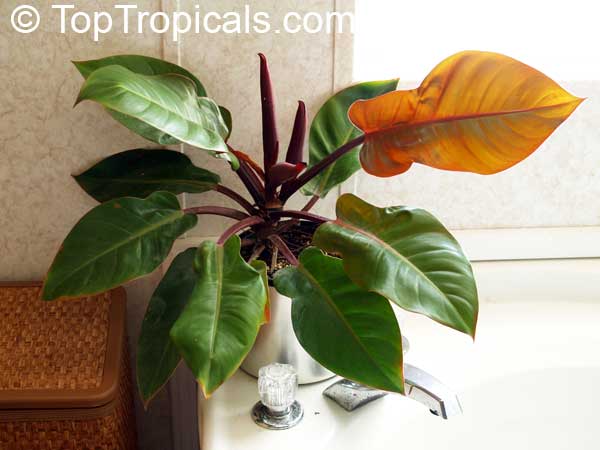
Although philodendrons don’t require pruning, they don’t mind it either, allowing you to shape your plant to suit your space. Pruning can also be done if your plant is starting to look leggy or the lower leaves are dropping off.
Adjust water with liquid fertilizer SUNSHINE Robusta according to growing season.
Add some love - and a little gem of the rainforest will take up a residence in your home, and definitely in your heart!
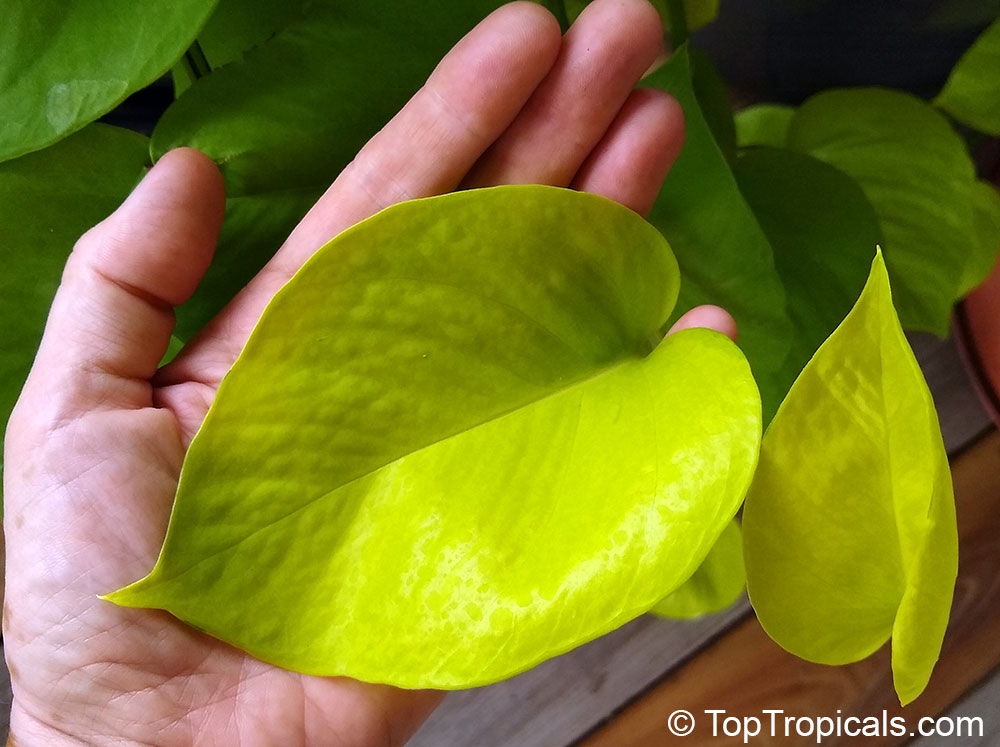
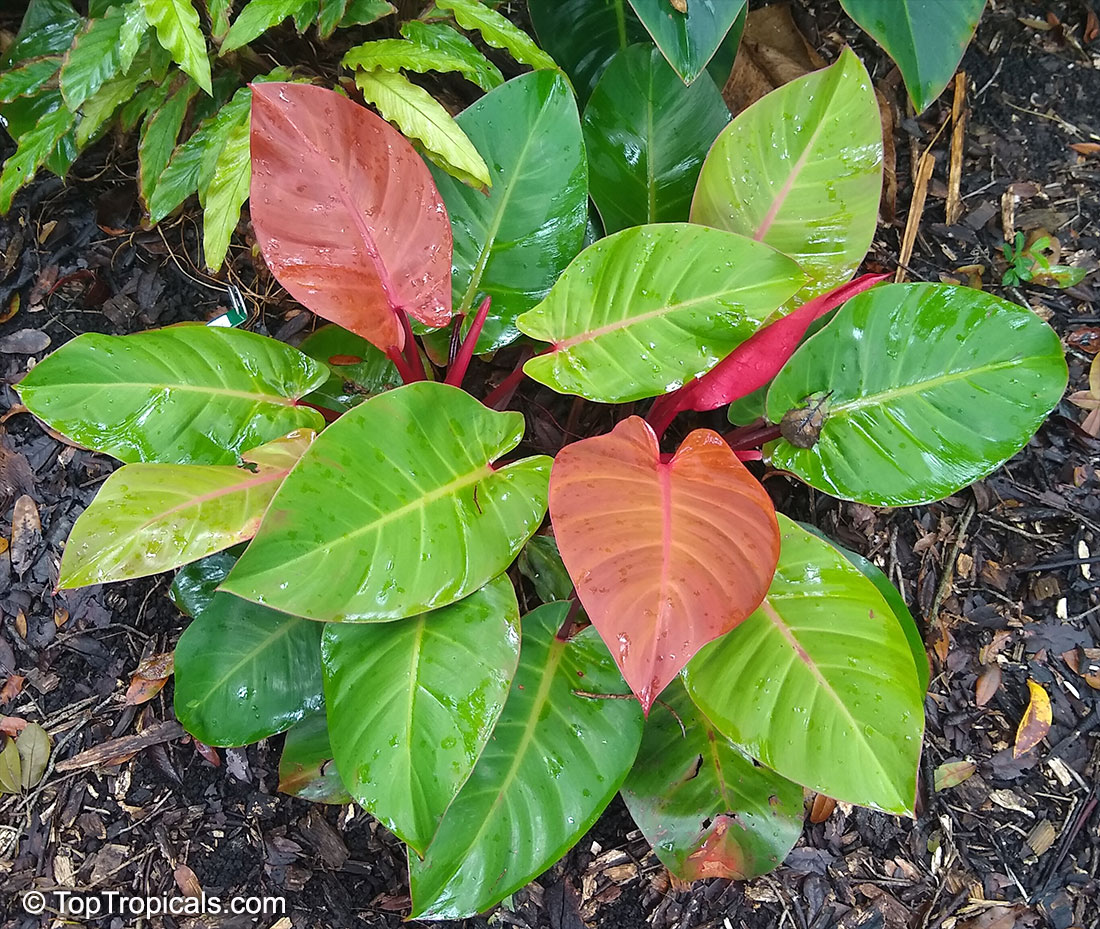
See more articles by Alex Butova

